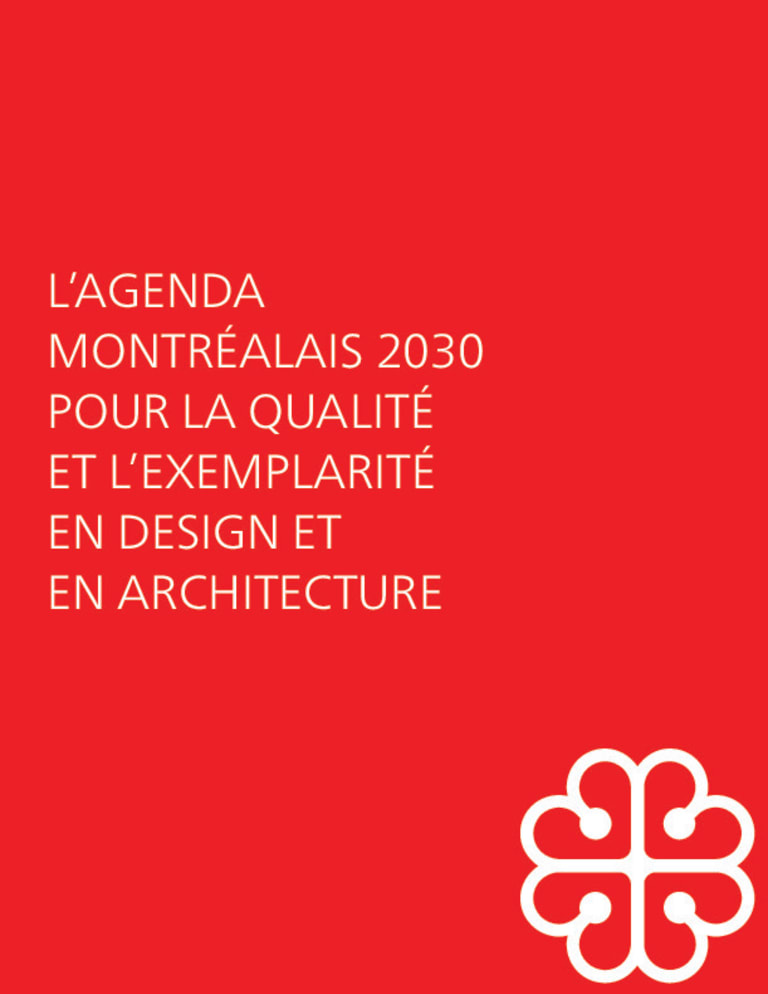The 2030 Montréal Agenda: Supporting sustainable, innovative living environments
With the 2030 Montréal Agenda, the city has made tangible commitments to sustainable social and ecological transition. The agenda is intended as a reference point for creating high-quality living environments through revisited practices and processes.
Why is design quality important?
Stakeholders in both the public and private sectors are responsible for the quality of our built environment. The 2030 Montréal Agenda for Quality and Exemplarity in Design and Architecture guides key municipal players and architecture and design professionals in carrying out their projects. In order to create a design culture, they will need to apply the six strategies of the agenda together in order to:
- Raise stakeholder awareness of the impacts of quality design and architecture.
- Integrate sustainable development principles and practices into design.
- Create supply procedures and rules in order to select quality design providers and contractors.
- Adopt project management methods that ensure quality is maintained.
- Promote transversality and interdisciplinarity.
- Adopt a regulatory framework for urban planning that is more consistent and more open to innovative practices.
Inspiring projects to build the future
The quality of a city’s design and architecture influences its residents’ well-being. Many projects already illustrate these principles and help make our environment and neighbourhoods better places to live.
- The Parcours Gouin welcome pavilion (architecture, landscape architecture): Montréal’s first zero energy consumption building. It comprises a gathering/education/cultural mediation space and is a showcase for eco-responsible living.
(Architecture: Birtz Bastien Beaudoin Laforest architectes - Provencher_Roy)
(Landscape architecture: Rousseau Lefebvre) - Maison du citoyen lookout (architecture, landscape architecture): This lightly structured agora is located along the riverside. It offers stunning views and is a perfect place to hold events, shows and concerts in the summertime. It features a skating rink in the wintertime.
(Architecture: Atelier Paul Laurendeau) - Le Phénix (architecture): This old industrial building was converted into a delightful and functional work space with a number of ecological features. The building was designed to reduce energy consumption and ensure a zero carbon practice.
(Architecture, structure engineering, sustainable development, interior design, brand promotion and graphic design, interior design, brand promotion and graphic design: Lemay) - Le Trekfit (industrial design): This outdoor fitness module system encourages collective ownership, accessibility and healthy living in a green atmosphere.
(Industrial design: Signature design communication).
Working together for a fair, healthy and inclusive environment
Design, preservation and enhancement practices for built heritage and urban landscaping need to be improved in order for Montréal to become more resilient to climate change, more ecologically responsible and more economically competitive.
Creating a design culture is an issue shared by the entire Montréal population, from residents to elected officials. Everyone’s collaboration is needed to ensure the success of the 2030 Montréal Agenda.
Want to know more? Read the full text.
Quick search
Need help?
Contact us if you have questions.
Are you sure you want to leave this page?
This page is not available in English. You will be redirected to the English home page.
